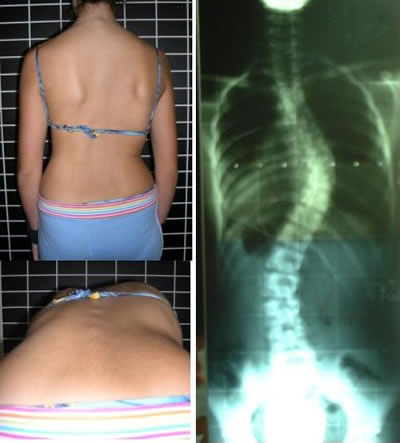Recognizing the signs of scoliosis
Scoliosis is a curvature of the spine of more than 10 degrees. It can begin at any age. However, it most often appears between the ages of 10 and 15, and it most commonly affects girls, according to Dr. Larry Wyatt of the American Chiropractic Association.
It’s easy for chiropractors and other health care professionals to check for scoliosis using the Adams test. Your child will be asked to bend forward until the spine is horizontal. If scoliosis is present, one side of the back may appear higher than the other.

According to the Scoliosis Research Society (SRS), “it is a very sensitive test for scoliosis; it is therefore the most frequent screening test for scoliosis.”
The SRS also lists these other signs of scoliosis:
- One shoulder may be higher than the other.
- One shoulder blade may be higher or more prominent than the other.
- With the arms hanging loosely at the side, there may be more space between the arm and the body on one side.
- One hip may appear to be higher or more prominent than the other.
- The head may not be exactly centered over the pelvis.
- The waist may be flattened on one side; skin creases may be present on one side of the waist.
“Fortunately, most patients with scoliosis have curves of less than 20 degrees,” says Dr. Wyatt. “These are usually not detectable to the untrained eye and are not a cause for concern, provided there are no signs of further progression.”
Three treatment options are available for scoliosis, Dr. Wyatt says. They include careful observation, bracing and surgery.
“Careful observation is the most common ‘treatment,’ as most mild scolioses do not progress and cause few, if any, physical problems,” he said. “Bracing is generally reserved for children whose skeletons are still growing and who have curves between 25 and 45 degrees.”
Surgery may be necessary if the curve is greater than 45 degrees, or if the scoliosis is affecting the function of vital organs such as the heart or lungs.
Akridge & Akridge Chiropractic can check your child for signs of scoliosis. We can also take x-rays in our office if signs indicate this is necessary.
To schedule an appointment or if you have questions, please call our office at 402-884-4774.
